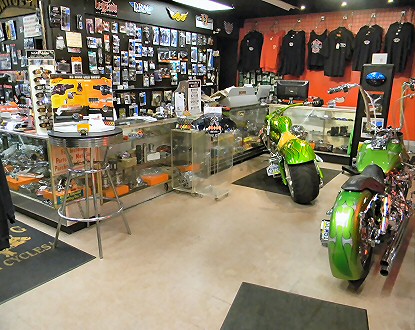Browse Through Our Motorcycle Shop for Expert Suggestions and Quality Products
Browse Through Our Motorcycle Shop for Expert Suggestions and Quality Products
Blog Article
An In-depth Take A Look At Motorbike Parts: What Every Biker Ought To Know
A thorough understanding of motorcycle components is not merely valuable however vital for any kind of motorcyclist intending to make best use of efficiency and security. Each part, from the engine's elaborate operations to the reliability of brake systems, plays an essential duty in the overall experience and performance of the bike.
Understanding the Engine
The engine, commonly considered the heart of a motorbike, is an intricate assembly of components that work in consistency to transform fuel into movement. At its core, the engine's key function involves the burning procedure, where air and fuel mix and stir up within the cylinders, leading to controlled explosions that drive the pistons. These pistons go up and down, transforming chemical energy into power, which consequently transforms the crankshaft, ultimately powering the bike.

Recognizing the complexities of a bike engine is crucial for fanatics and motorcyclists alike. It not only provides understanding right into how motorcycles attain their excellent power and speed but additionally help in efficient maintenance and troubleshooting, ensuring long life and dependability on the road.
Suspension Systems
While the engine powers the bike, the suspension system plays a vital duty in making sure a smooth and controlled experience. The suspension system is in charge of absorbing shocks from the roadway surface, keeping tire get in touch with, and providing security during cornering and stopping. It comprises 2 main parts: the front forks and the rear shock absorbers.
Front forks are generally telescopic, including a spring and moistening system. The springtime compresses and prolongs to soak up bumps, while the dampening system regulates the motion to avoid extreme jumping. This combination makes sure the front wheel continues to be touching the road, providing premium handling and convenience.
The back suspension, commonly a monoshock or twin-shock setup, functions in a similar way to the front suspension but is tailored to sustain the bike's weight and rider - moto parts nz. It handles back wheel activity, contributing to the bike's overall balance and responsiveness
Shock absorber can be flexible, permitting riders to tweak preload, compression, and rebound setups according to individual choices and riding problems. This adjustability boosts efficiency by optimizing the motorcycle's communication with varied surfaces. In summary, an effective suspension system is important for motorcyclist convenience, safety and security, and the bike's taking care of expertise.
Brake Elements
Stopping power is a fundamental facet of bike safety and security, and it depends upon the performance of the brake parts. The key components of a bike's stopping system include the brake pads, calipers, rotors, and master cylinder. motocross parts nz. Each of these parts plays a crucial role in making certain reliable stopping efficiency
Brake pads are necessary as they produce the required friction versus the blades to decrease or stop the bike. Created from materials such as sintered metal or natural compounds, the choice of brake pad material significantly influences efficiency and durability. Calipers, real estate the brake pads, use stress to the pads when the brake lever is involved, helping with call with the blades.
The rotors, normally made from stainless steel or cast front paddock stand motorcycle iron, are placed to the wheels and act as the surface area versus which the brake pads press. Their design, consisting of diameter and density, impacts heat dissipation and quiting power. The master cylinder, attached to the brake lever, generates hydraulic stress transmitted via brake lines to the calipers, making sure consistent stopping pressure.
Routine upkeep and assessment of these elements are important for optimal performance, avoiding wear and ensuring rider safety on the roadway.
Tire Basics
Beyond keeping durable stopping systems, ensuring ideal tire efficiency is similarly considerable for bike safety and security and performance. Tires are the single call point between the motorcycle and the road, making their problem essential in taking care of, security, and total adventure top quality.

Additionally, take into consideration the tire's age. Rubber compounds weaken gradually, even if walk shows up sufficient. Examine the sidewall for the DOT (Department of Transport) code to determine the tire's age. Commonly, replacement is suggested every five years, no matter wear. Spending focus in these tire essentials not only maximizes efficiency yet additionally dramatically boosts riding safety.
Electrical Systems
In the realm of motorbike upkeep, the electric system plays an important duty in ensuring reputable efficiency and cyclist safety. This intricate network encompasses necessary parts such as the battery, generator, starter electric motor, and wiring harness. Each element is important for the seamless operation of the motorbike, from ignition to illumination and communication with different sensors.
The battery functions as the heart of the electric system, giving the necessary power to start the engine and operate devices. Routinely checking the battery's voltage and terminals for corrosion is essential to stop unforeseen failings. The alternator, on the other hand, recharges the battery while the engine is running, ensuring a continuous power supply.
To maintain it, cyclists ought to pay focus to any type of uncommon noises or troubles during start-up. Guaranteeing that the cords are intact and cost-free from damage is essential for ensuring and stopping brief circuits performance.
Verdict

Quiting read power is a basic element of motorbike security, and it hinges on the efficiency of the brake parts. The key aspects of a motorbike's braking system include the brake pads, calipers, blades, and master cyndrical tube.Brake pads are necessary as they produce the required friction versus the rotors to slow down or quit the bike.Beyond preserving robust braking systems, ensuring optimum tire efficiency is equally significant for bike security and effectiveness.In the realm of bike upkeep, the electrical system plays an important role in ensuring dependable performance and cyclist security.
Report this page